|
History
Land
Beyond Punjāb
Deg Teġ Fateh
Archives
|
Bābā Nānak’s beliefs in human equality (mandā kisai na ākhīai paŗu akhar eho bhujhīai, M1, GG, 473; mandā kis no ākhīai jān sabhanā sāhibu ek, M2, GG, 1238), hard work (kirat), sharing of food (vanḍ chako), contributing to the collective good (dān), service (sevā), living with respect (pati [with no provision for staying hungry or having to beg]) manifested in the institution of langar at Kartārpur. At Ramdāspur, the Sikhs prayed for the general welfare, which meant that all should have access to food and justice (sabh bhalā manāvahi [M5, GG, 818], sarab kaliāņ [M5, GG, 801]).
Simultaneously, Bābā Nānak sang of the hedges around the fields (man hāļī kirsāņī karņī saramu pāņī tanu khetu, nāmu bīju santokhu sauhāgā rakhu ġarībī vesu, M1, GG, 595; Gurdās Bhallā, Vār: 26,25,1), which evolved into a group of guards and then a small army protecting the periphery of Rāmdāspur (Gurū sace baddhā theh, rakhvāle Gurū dite, M4, GG, 653; gharu laškar sabh terā, M5, GG, 622). Resisting insertion/injustice was an important element of Sikh thinking of the period and the memories of Gurū Arjan (1584-1606) as a falcon trainer, and his son, Gurū Hargobind, whose love for weaponry made him name one of his sons as Teġ Bahādur (“brave [user] of sword”). It was Teġ Bahādur, who went on to sacrifice his life to protect local people from the Mughal injustice (jagg dī cādar).
Around 1690, we see the Sikhs singing of the importance of provision of food and justice for all around (deg teġ jagg mai doū chalai, Bacitar Nātak Granth, c.1690), and this turned into a public declaration that ensuring deg and teġ to the society around was the mission of the Khalsa Panth. This came the forefront of Sikh thinking during this period (Jas deg dā te rāj teġ dā, Rahitnāmā Chaupā Singh; dego teġo fateh nusrat bedarang, yāfat az Nānak Gurū Gobind singh, Parcīān Sevadas, 1708), and has continued that way since then.
At Anandpur, this thinking took two emblamatic forms. We have references to the Sikh niśān (flag) going back to the mid-sixteenth century (GG, 1393), and during this period the symbols of deg and teġ lying side by side were imprinted on it. In addition, the Sikhs took the Mughal sikke (coins) and made a counter strike on them with the symbol of deg with teġ standing in it. The sikke and niśān became the markers of fateh and with access to a mint in 1710, the Sikhs created their own sikke commemorating Bābā Nānak and Gurū Gobind Singh, and this continued till the arrival of the British. The British, however, made a wholesale effort to melt the Sikh sikke and replaced them with the English coins. This forced the elimination of a critical symbol of fateh from the Sikh conceptual landscape.
Sikh supplication offered in homes and gurdvārās commemorates the makers of the Panth’s history in terms of those who "provided food to the hungry" (deg calāī) and others who fought to obtain justice (teġ vāhī) for the weak. With the sikke virtually gone in the 1850s, the Sikhs concentrated on the niśān. As a result their revernce for it expanded and took the form of circumambulating its base and ceremonially changing its cloth covering once a year. While the largest building in the Darbār Sāhib precinct is that of the langar, the tallest markers are the two niśāns besides the Akāl Takhat. The precinct also ensconces three memorials dedicated to Sikh warriors who died fighting against injustice in 1757, 1767, and 1984, respectively, and holds a set of arms that are believed to have been used by the Sikhs while participating in historic battles.
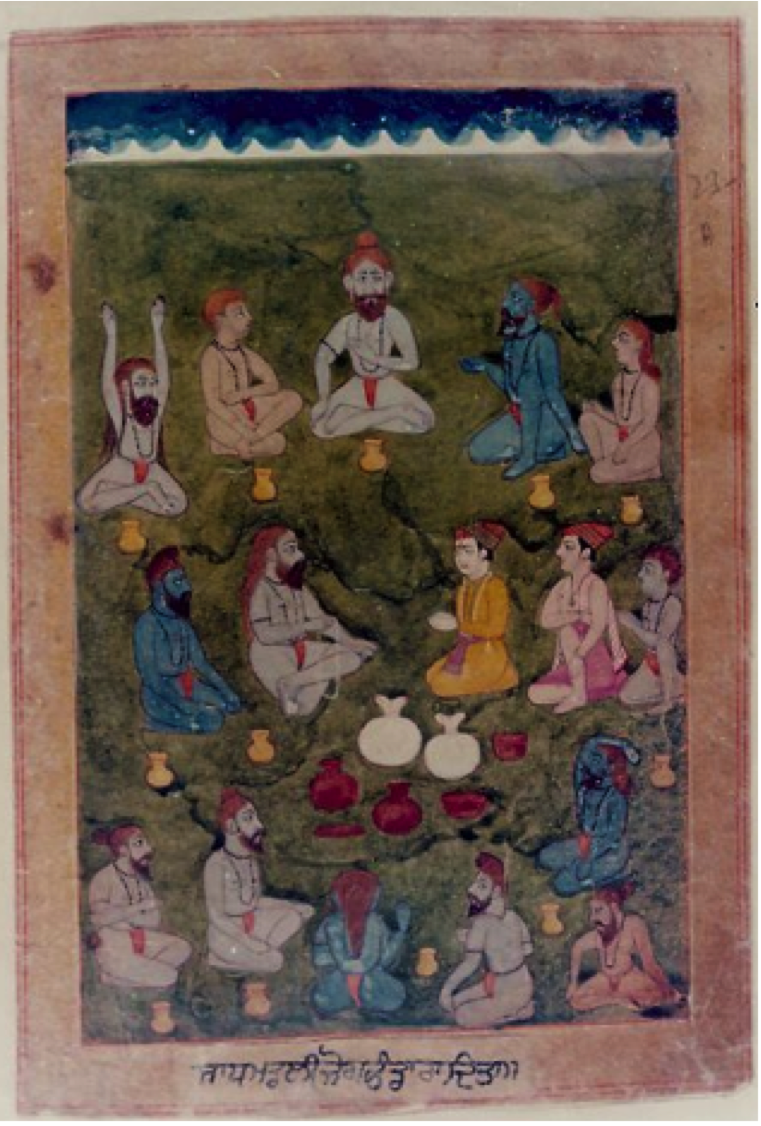 Bābā Nānak feeding the ascetics
Bābā Nānak feeding the ascetics
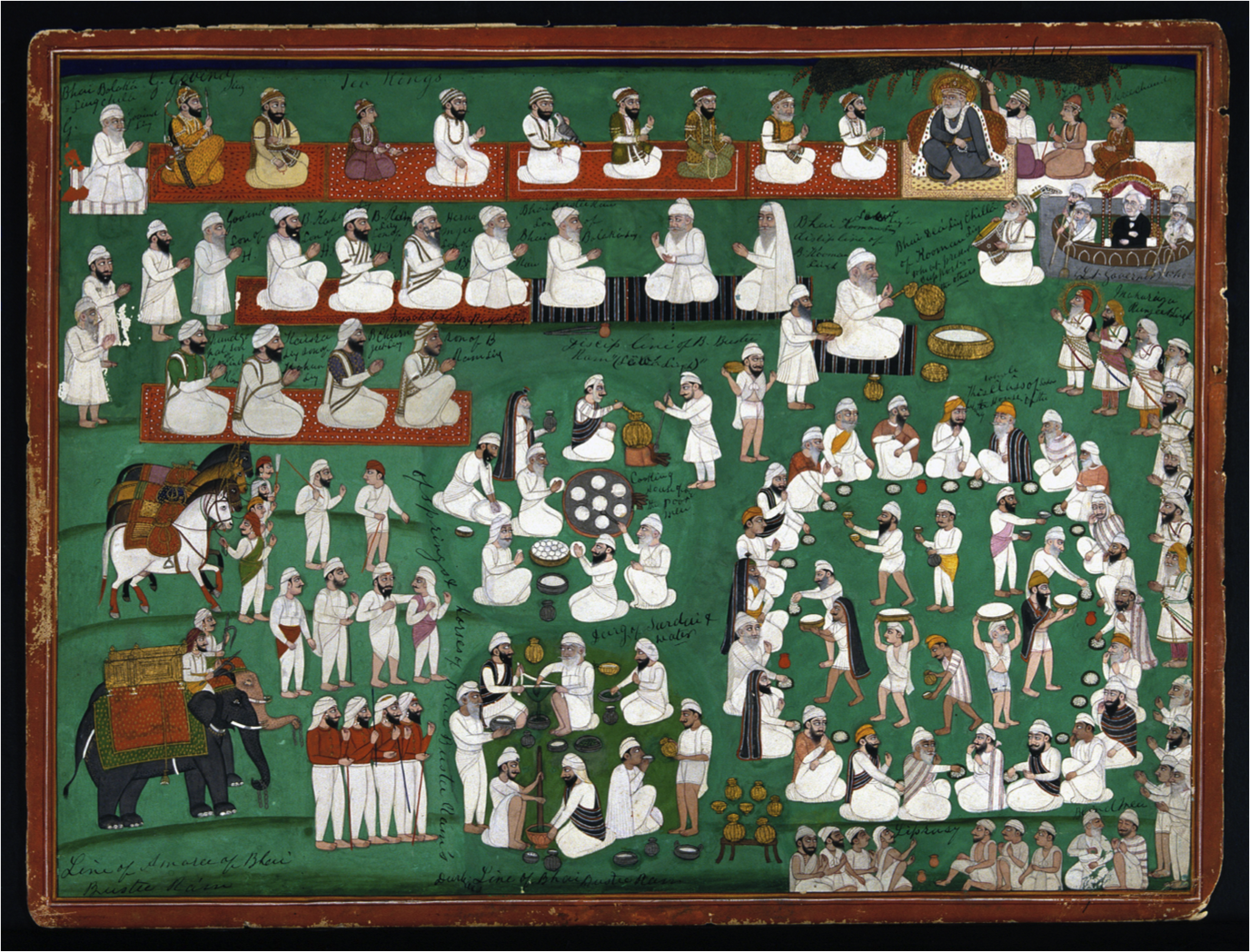 A langar scene (mid-19th century, c. Imperial War Museum, London)
A langar scene (mid-19th century, c. Imperial War Museum, London)
|
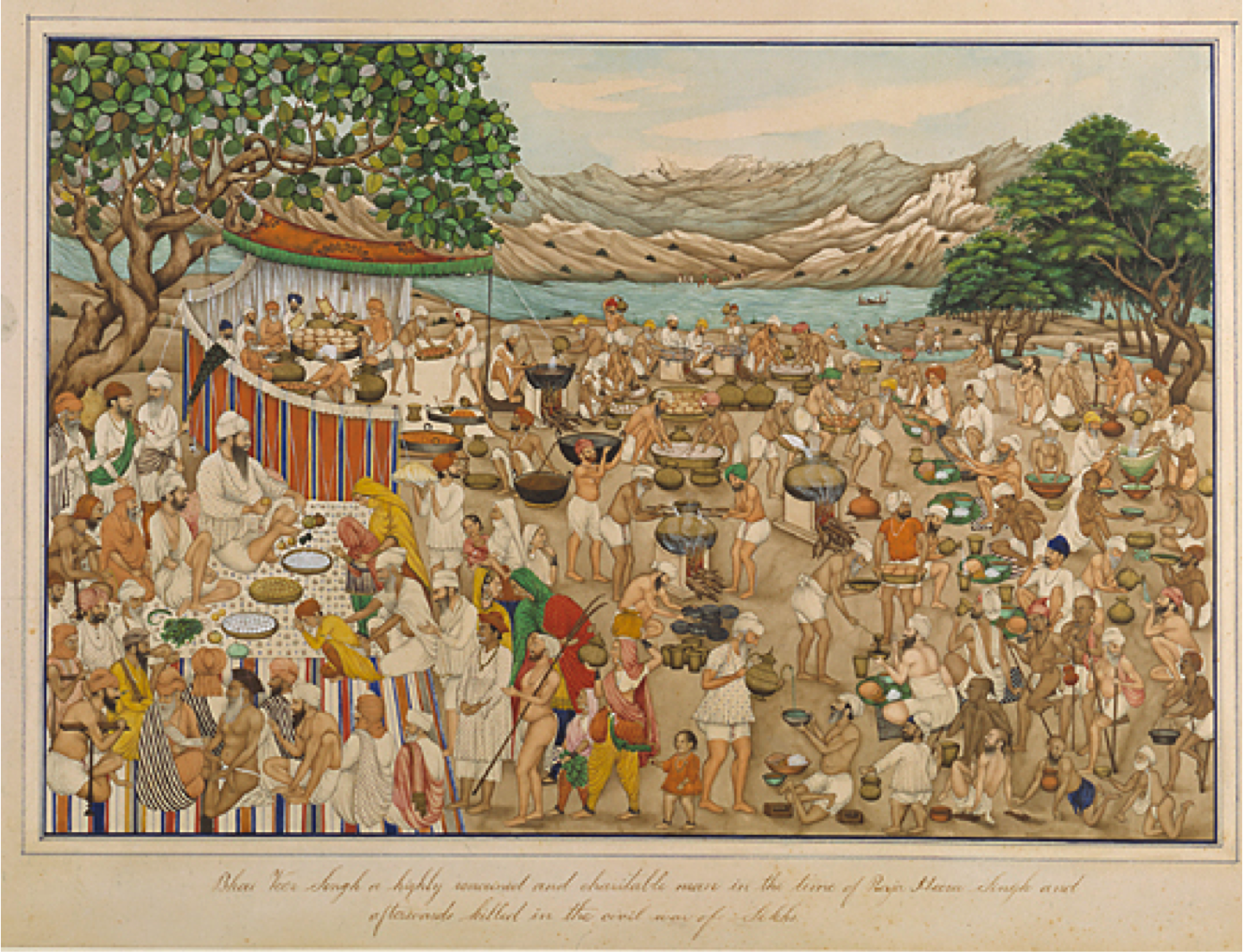 Bīr Singh serving langar (mid-19th century, c. N.S. Kapāny)
Bīr Singh serving langar (mid-19th century, c. N.S. Kapāny)
|
![Serving food: the Birmingham Version (U.K. [2000])](images/servingfood.png)
Serving food: the Birmingham Version (U.K. [2000])
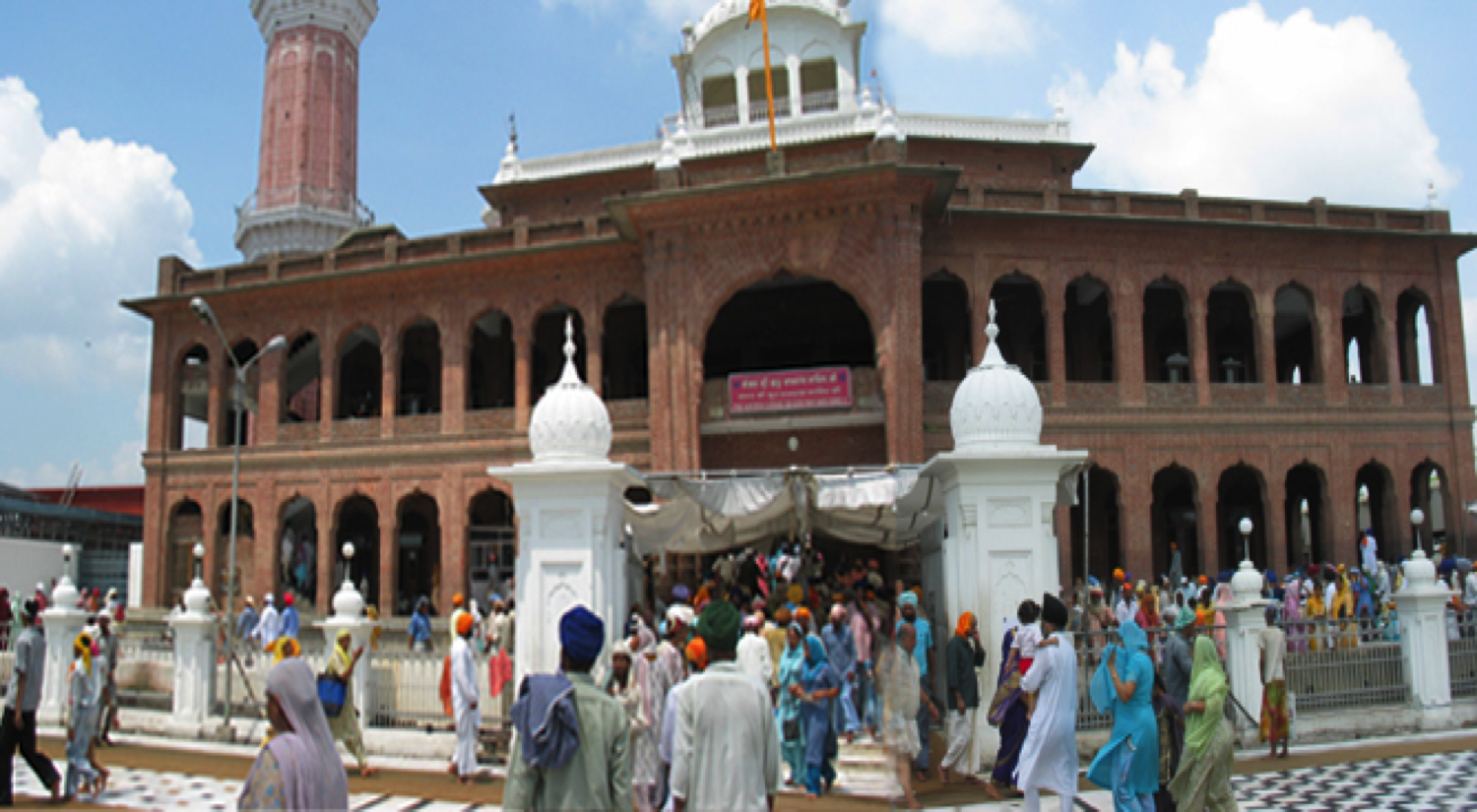
At Darbār Sāhib (the largest building on the precinct)
For more on langar, Click Here

The flowers placed in the form of deg teġ fateh
symbol and the sword below it
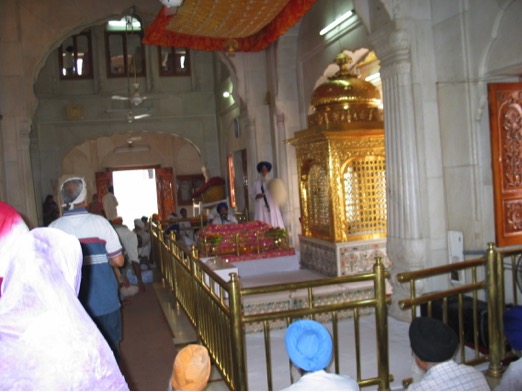 The golden enclosure at the center of the Akāl Takhat contains Sikh historic weaponry
The golden enclosure at the center of the Akāl Takhat contains Sikh historic weaponry
|
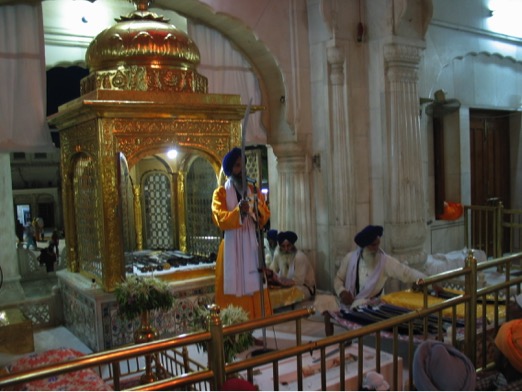 The history of each of these weapons is narrated in the morning before placing them for public display, and in the evening when shifting them away from the public gaze
The history of each of these weapons is narrated in the morning before placing them for public display, and in the evening when shifting them away from the public gaze |
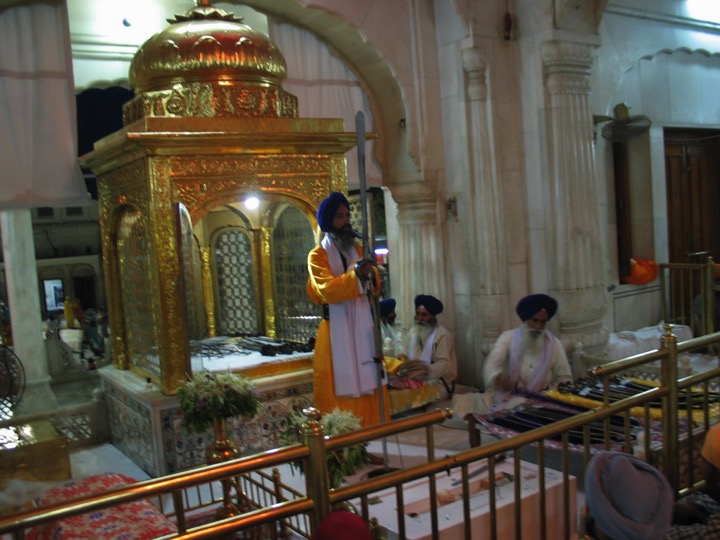 At the Akāl Takhat
At the Akāl Takhat |
 At the Akāl Takhat (under the canopy)
At the Akāl Takhat (under the canopy) |
![<em>Deg and Teġ</em>: the Birmingham Version (U.K. [2000])](images/birminghamversion.jpg) Deg and Teġ: In Birmingham, U.K. (2000)
Deg and Teġ: In Birmingham, U.K. (2000) |
 In Patna, Bihar (Sept.2016)
In Patna, Bihar (Sept.2016) |
 Two sides of the coin minted in 1710, courtesy American Numismatic Society of New York
Two sides of the coin minted in 1710, courtesy American Numismatic Society of New York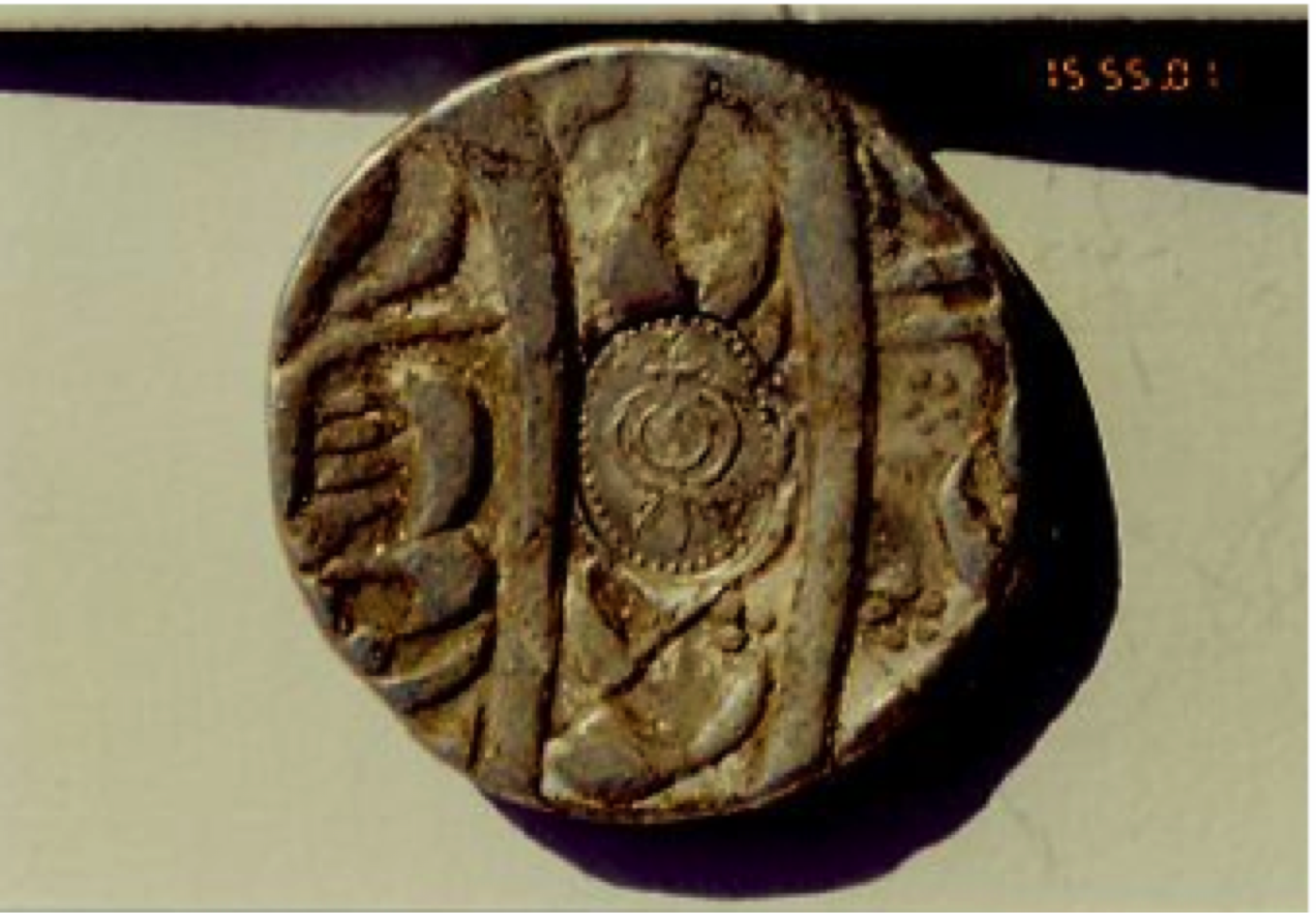 The counter strike of deg teġ emblem on a Mughal coin of 1699
The counter strike of deg teġ emblem on a Mughal coin of 1699
|
|
 Niśān: At Darbar Sahib
Niśān: At Darbar Sahib |
 Niśān: At Akāl Takhat
Niśān: At Akāl Takhat |
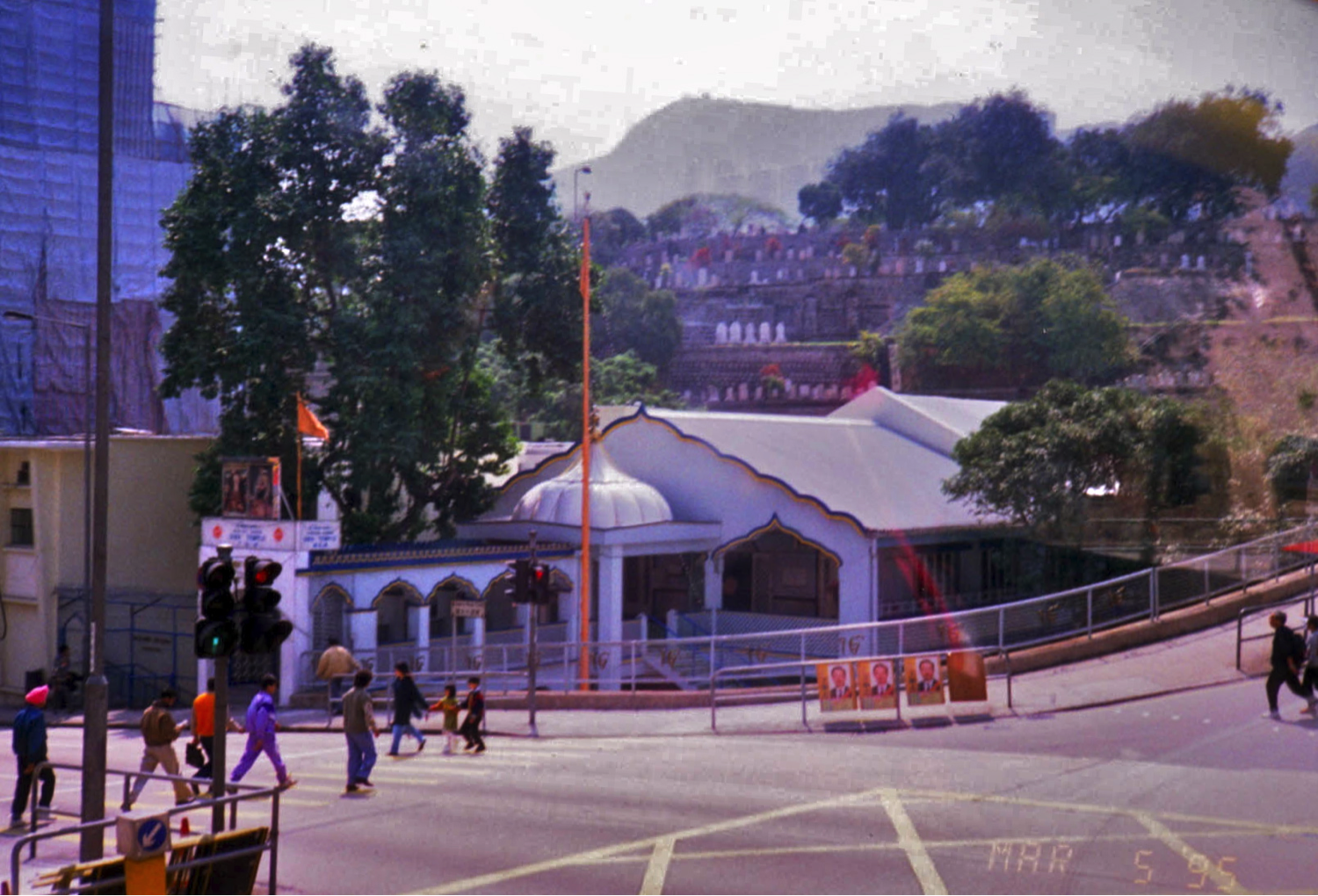 Hong Kong
Hong Kong |
 Palatine, Chicago
Palatine, Chicago |
Offering reverence to niśān at Takhat Patna (Sept. 2016)
Ceremonial changing of the niśān’s robe, Lautoka, Fiji (2013)
|